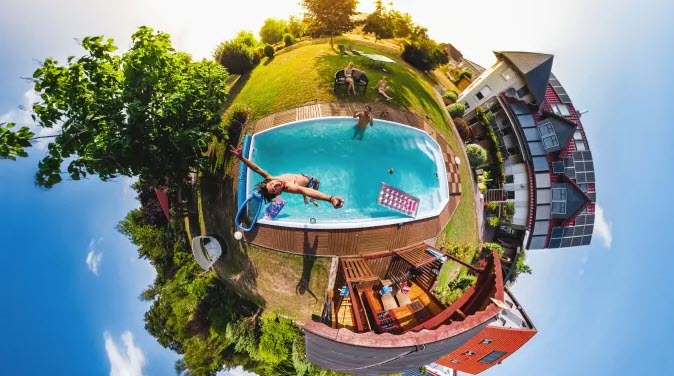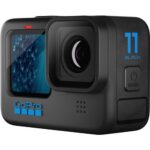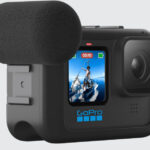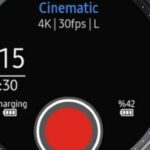When 360° cameras such as those from Samsung, 360Fly and Ricoh etc first came out, the excitement was the novelty of having a video in a browser and being able to scroll it around, up and down in some cases zoom in and out.
However this soon because a bit blasé, and the novelty factor soon wore off.
Then the Vuze, designed by some clever clogs in Israel came out with its pop out lenses and ability to not only shoot 360° video but also take wide panorama photos with panning. This was followed by the Kandao QooCam which had the same principle but in a totally different form factor.
The darling of the action camera set, GoPro got in on the act with the GoPro Fusion, but in truth, this was a clumsy and somewhat cobbled together attempt, let down by an atrocious app as all the stitching was software dependent (I spent weeks with GoPro support trying unsuccessfully to get the menus to display in bloody English, that’s how bad it was, let alone the engineering clunkiness underneath the surface).
One brand we haven’t seen in Australia as yet, Insta360 from China, apparently raised the bar (from what I am able to gather as the company has decided that Australia is not worthy of its interest so they tell me), as the stitching is performed in-camera.
GoPro saw this and went hmmm… and set some engineers to work. The result has been the GoPro MAX, a camera with the same sort of design as the defunct Fusion, but light years ahead in terms of development, although there are some glitches.
Based on an almost square body with a lens each side and an LCD on the back (depending which way you look at it as either lens can be the “front” lens), the GoPro MAX has a number of different modes for shooting.
Both panoramic stills and 360° footage can be shot, and GoPro has added functionality such as HyperSmooth, TimeWarp and SuperView into the mix (those VisiCalc guys have a lot to answer for).
As its name suggests HyperSmooth is in-camera stabilisation, and in theory at least then, gets rid of the need for software to fix in post the unwanted shake and jitters of these types of cameras. And work it does, very well indeed in fact in my testing. As a party trick, it also lets you get rid of the horrible curvy horizon nonsense wide angle lenses are born with.
SuperView is the generic term covering the GoPro MAX wide angle abilities and this includes panoramic shots up to 270° which GoPro calls PowerPano
TimeWarp is a fancy name for time lapse, and it can be shot in 360° video, and you can put the MAX into “HERO” mode where it emulates the GoPro Hero 8 camera using a linear mode so stills too.
All the modes and all their various functions can be accessed via tapping and swiping on the touch screen LCD, or alternatively, there is of course the GoPro app for smartphones. A vocabulary of voice commands for basic common functions is also supported.
But the real party trick is in the Reframe plug in available for Adobe Premiere and After Effects. This turns the GoPro MAX from a 360° capable camera into a one-man (Person? Thing?) multi shooter as with every angle being captured at once, using Bezier based ease-in / ease-out keyframing, some amazing footage cane be created –amazing as long as it was shot with this process in mind in the first place of course.
You will need the GoPro MAX export software though to turn the footage from the native .360 format to equirectangular.
Originally, the GoPro VR player allowed this functionality, but it took me about 2 hours and then – gulp – an online chat with GoPro support to discover this is no longer supported. Indeed the .360 format used is not even read by the VR Player. At least I couldn’t get it tow work, even after the nice person in support (via a chat system) told me that all I needed was a driver update for my GeForce GX1070 graphics card.
(If I am wrong here, please tell me as all the info I was getting was potentially contradictory. If you do have the MX working in VR player, let me know).
No, it seems you are pretty much bound to the Adobe platform to unlock all this power, although using Blackmagic Da Vinci Resolve and Fusion does also give you some pretty impressive results using their own tools (and the benefit there of course is that Resolve and Fusion are free. A good tutorial on this is at https://360rumors.com/edit-360-videos-davinci-resolve/ and is also suitable for the Kandao QooCam and Vuze cameras).
Vegas Pro and Corel VideoStudio also support basic VR / 360° functions, but I haven’t as yet tried these – I’ll keep you posted.
If you have a GoPro MAX already, I’d suggest having a play with these extended facilities. If you are thinking of buying a GoPro Max (or indeed any other 360° capable camera), you do really need to think of what you will use it for. If the 360° functionality is a low priority and therefore will be used more for “action-man” stuff, then really, you’d be better of with a Hero 8, DJI OSMO ActionCam or if you want some serious manual camera control, the brilliant Sony RX0 Mk II.
The GoPro MAX costs AUD$799.95 and is avalable here.
As you may be aware, at Chez Australian Videocamera we are rather fond of 360 footage (and 3D) so over the next months, are going to be doing a lot more in this area in terms of testing, tutorials and so on so keep watching! And if you have any ideas, suggestions or tips please do let me know.






